|
|
|
Oxford University Press
|
Here is a marvelous guide to over 2,500 operatic characters, along with invaluable synopses of over 200 major works. From Arabella to Wozzeck and from Aeneas to Zaida, here is a wealth of information on the main characters in the repertoire of both opera and operetta, ranging from brief identifications of minor characters to extensive multi-page essays on major figures. Each entry provides a full description of the role, indicates its vocal category, and discusses who first created the part and other notable performers. This new edition has been revised and fully updated, with a fascinating new appendix of contemporary operas of the last ten years, including detailed synopses and world premiere cast lists, plus a list of opera-related web links. Best of all, the volume boasts more than two dozen feature articles on major characters, written by well-known personalities who themselves constitute a who's who of opera. For instance, Placido Domingo discusses the character of Otello, perhaps his greatest role, and Janet Baker writes on Mary Stuart. |
|
The Oxford Essential Portuguese Dictionary is a compact Portuguese-English and English-Portuguese dictionary that offers up-to-date coverage of all the essential day-to-day vocabulary with over 40,000 words and phrases and 60,000 translations. This dictionary is easy to use and ideal for travel, work, or study. The latest words in each language have been added, reflecting all aspects of life today, from computing and technology to lifestyle and business. Additional features include guides to Portuguese and English pronunciation, as well as help with both Portuguese and English verbs. The dictionary is based on Brazilian Portuguese with extra information where European Portuguese is different. All the latest spelling reforms have been included. The Oxford Essential Portuguese Dictionary is ideal for anyone in need of a handy quick reference. An essential book for the study of Portuguese. |
|
This fascinating book tells the stories of the most dramatic, memorable, and important conflicts in world history, from Agincourt, Lepanto, and Trafalgar, to Gettysburg, Stalingrad, and the Somme. It begins with the battle of Megiddo fought by the ancient Egyptians and takes the reader through to the Second Gulf War of 2003. On the way it encompasses almost 300 battles from around the world — from the Middle East, Asia, and Africa, to Europe and the Americas. All the battles are grouped within chapters which tell the wider story of a particular era or region, for instance the ancient world or the Americas. Each chapter includes an informative introduction that sets out the historical, tactical, and technological context, and looks at current debates. Individual battles are placed clearly within the wars and campaigns of which they formed a part, making it possible for the reader to follow the details of the battle, and at the same time to understand its military and historical implications. Battlefield summarizes the very best of contemporary scholarship on battles and war in an accessible, engaging narrative. Detailed maps portray the course of famous battles and campaigns, and a range of illustrations — many from contemporary sources — bring the narrative to life. An extensive index gives the reader quick access to historical figures, locations, battle formations, and much more. This is an indispensable guide for history students, military enthusiasts, and professionals working in the field, and an ideal book for anyone with an interest in what Winston Churchill called 'punctuation marks in history'. |
|
This is the reissued Colour Oxford Dictionary and Thesaurus. The Colour Oxford Dictionary and Thesaurus offers the most accurate and up-to-date coverage of essential, everyday vocabulary, with over 45,000 words, phrases, and definitions, and over 65,000 synonyms based on evidence from the Oxford English Corpus, a unique databank comprising hundreds of millions of words of English. Definitions are easy to understand, given in a clear, simple style, and avoiding technical language. The thesaurus entry for a word sits directly alongside the dictionary entry so that you do not have to hunt around the page to find the word you are looking for. The centre section gives guidance on 'Effective English' which covers writing English and how to get the best out of your dictionary and thesaurus. Explore our language resources on oxforddictionaries.com, Oxford's home for dictionaries and language reference. Updated regularly with the latest changes to words and meanings, the site provides hundreds of thousands of definitions, synonyms, and pronunciations in a range of languages. Access the highest quality language content, built from our extensive research, for free on your desktop or device. |

|
Oxford Children's Myths and Legends bring you the greatest stories ever told, from around the world and long ago. Heroes and villains, witches and wizards, warriors and royalty — there's something here for everyone. This lively collection brings to life the very best English traditional fairy tales and stories. From Johnny Gloke the giant killer and the frog prince at the World's End, to the better-known characters of Dick Whittington and Tom Thumb, this magical collection is full of adventure and humour. |
|
The Oxford Student's Science Dictionary supports the curriculum and gives comprehensive coverage of the key scientific terminology that students in secondary school need for GCSE and beyond. The dictionary contains over 1000 scientific words and phrases in alphabetical order, with related words listed under each headword. There are feature panels on key topics such as electricity, classification, metals, and the periodic table, all fully supported by 2-colour diagrams and illustrations. Clear, accessible definitions and cross referencing give full clarity to complex scientific entries. It is the ideal companion to the Oxford Student's Mathematics Dictionary. |
|
This first edition of A Dictionary of Dentistry provides over 4,500 definitions covering all the important terms and concepts used in dentistry today. Entries are written in clear and concise English without the use of unnecessary dental or medical jargon, and many entries are supplemented by detailed line drawings. The dictionary defines terms in a broad range of dental specialist areas including primary care, anatomy and comparative anatomy, physiology, biochemistry, radiography, radiology, orthodontics, periodontology, restorative dentistry, dental public health, paediatric dentistry, oral surgery, embryology, homeopathy, pharmacology, sedation, histology, implantology, ethics, and oral medicine. For completeness, some drugs, techniques, and instruments of historical interest have been included. It also includes a number of biographies of those who are considered to have made a highly significant contribution to dentistry. The principal muscles, nerves, arteries, veins, foramina, and sinuses of the head and neck together with illustrations are grouped together as appendices: also included is a further reading list, and a list of common symbols and abbreviations used in both the UK and America. A key feature of this book is the Dictionary of Dentistry companion website, which provides quick access to recommended web links for many entries, plus over 100 full-colour illustrations. An essential guide for dental practitioners and dental students, it is also an invaluable reference source for all members of the dental team, medical practitioners, lawyers involved with members of the dental profession, and the general reader. |
|
'World music' emerged as an invention of the West from encounters with other cultures. This book draws readers into a remarkable range of these historical encounters, in which music had the power to evoke the exotic and to give voice to the voiceless. In the course of the volume's eight chapters the reader witnesses music's involvement in the modern world, but also the individual moments and particular histories that are crucial to an understanding of music's diversity. World Music is wide-ranging in its geographical scope, yet individual chapters provide in-depth treatments of selected music cultures and regional music histories. The book frequently zooms in on repertoires and musicians — such as Bob Marley, Bartok, and Nusrat Fateh Ali Khan — and attempts to account for world music's growing presence and popularity at the beginning of the twenty-first century. |

|
The Oxford Colour Russian Dictionary has a exceptionally clear layout and with all headwords, compounds, and derivatives appearing in blue. Phrases are included, giving a firm foundation for Russian language development. Lists of spelling rules, declension of Russian verbs, and a key to the Russian alphabet give full support to boost confidence. In addition, there is a section on When and How to use each word with hundreds of examples showing the real do's and don'ts of grammar and usage.There are also word-games to build knowledge of grammar and word choice, helping you get the best out of your dictionary. Discover more at www.oxforddictionaries.com/access, Oxford's hub for dictionaries and language reference. The site is regularly updated with the latest new words and meanings from Oxford's modern languages research programme, the Oxford Languages Tracker. You can also hear audio pronunciations and improve your language skills with online cultural notes, guides to writing, and much more. |

|
Who is a typo pirate? Are they related to fat clients? And what is shovelware? The rapid rise of the Internet has changed our language. This dictionary allows you to keep up with those changes by concentrating in-depth on Internet terminology. Featuring over 3,600 jargon-free entries, from the thousands of new abbreviations, technical terms, and user-jargon to terms associated with e commerce, security, and the use of the Internet for business purposes. Useful appendices include country codes, popular emoticons, and popular chat room and email abbreviations. This reference book will prove invaluable to anybody working with information technology from the general Internet user to employees in the industry. |

|
This is the most wide-ranging, comprehensive, and up-to-date dictionary of archaeology available. Over 4,000 A-Z entries explain the terms encountered in academic and popular archaeological literature, in lectures, and on television. Topics covered include artifacts, techniques, terminology, people, sites, and periods, and specialist areas such as industrial and maritime archaeology. This second edition is fully revised and updated, with 150 new entries on archaeological sites, terms, movements, and people, plus extended coverage of archaeological resource management and archaeological theory. While the dictionary's primary focus is on Europe, the Old World, and the Americas, as these are the regions where archaeology has become best established, it also includes key archaeological sites around the world. A quick-reference section covers chronological periods, Egyptian rulers and dynasties, Roman rulers and dynasties, rulers of England to AD 1066, and principal international conventions and recommendations. New to this edition are recommended, up-to-date web links for over 100 entries on the Dictionary of Archaeology companion website, regularly updated to keep links completely current. |
|
A three-level course reflecting the interests of young teenagers. |

|
This is a two-level package for young learners that starts with listening and speaking but can move on to reading and writing as soon as your class is ready. |

|
Graded 'read and do' fiction and non-fiction readers that teach children about the world around them. |
|
Graded 'read and do' fiction and non-fiction readers that teach children about the world around them. |
|
Graded 'read and do' fiction and non-fiction readers that teach children about the world around them. |
|
Graded 'read and do' fiction and non-fiction readers that teach children about the world around them. |
|
Graded 'read and do' fiction and non-fiction readers that teach children about the world around them. |
|
Graded 'read and do' fiction and non-fiction readers that teach children about the world around them. |
|
Graded 'read and do' fiction and non-fiction readers that teach children about the world around them. |
|